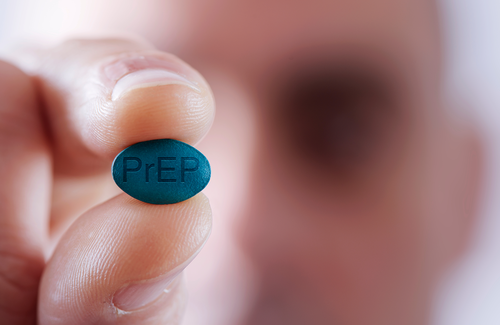Drug resistance acquired in rare cases of HIV infection during treatment with pre-exposure prophylaxis (PrEP) rapidly disappears once medication is discontinued, investigators report in AIDS. Use of ultra-sensitive tests performed six months after seroconversion and discontinuation of PrEP failed to find any resistant virus.
“Multiple studies have now shown that the risk of developing resistance from PrEP is very low, but is an important concern for those who initiate PrEP during unrecognized acute infection,” comment the authors. “Our data show that resistance selected in these cases decays rapidly to levels below detection of even highly sensitive assays.”
PrEP with emtricitabine/tenofovir (Truvada) or tenofovir (Viread) alone is highly effective at preventing infection with HIV. However, resistance to these antiretroviral drugs has been detected in individuals who initiated PrEP during unrecognized acute HIV infection, and, very rarely, in patients infected with HIV while taking PrEP.
Such resistance could limit future HIV treatment options. It is therefore important to determine if it persists once treatment is withdrawn. To answer this question, investigators from the Partners PrEP study designed a longitudinal study involving nine patients who had drug-resistant HIV (K65R, K70E, and/or M18IV mutations) detected during HIV seroconversion. Archived blood samples were tested to see if resistance was transmitted or acquired because of PrEP. Ultra-sensitive assays were used to monitor for resistant strains of virus six, twelve and 24 months after cessation of PrEP.
Archived blood samples which were HIV RNA-positive, antibody-negative were available prior to seroconversion for four of the nine patients. None of these patients had resistance mutations prior to seroconversion, suggesting that resistance was acquired due to PrEP therapy rather than being transmitted.
PrEP was stopped immediately on the detection of seroconversion. Ultra-sensitive assays were used to see if resistance persisted after PrEP was withdrawn.
Levels of resistant virus had decayed – or fallen – to below the limit of detection in all patients six months after treatment was discontinued and remained undetectable twelve and 24 months after follow-up.
“PrEP-selected resistance decays rapidly after PrEP cessation,” comment the investigators. “By six months after seroconversion (after PrEP was discontinued), resistance mutations K65R, K70E and/or M184IV that were present at seroconversion were no longer detected, even with highly sensitive resistance testing.”
Only one patient started antiretroviral treatment (ART) within 40 months of seroconversion. This patient initiated therapy at month 33, taking a combination of nevirapine/emtricitabine/tenofovir. Viral load was approximately 19,000 copies/ml. Three months after starting ART, this patient had an undetectable viral load.
The investigators call for future studies to examine whether PrEP-associated resistance affects subsequent response to treatment.
Weis JF et al. Preexposure prophylaxis-selected drug resistance decays rapidly after drug cessation. AIDS 30: 31-35, 2015.

